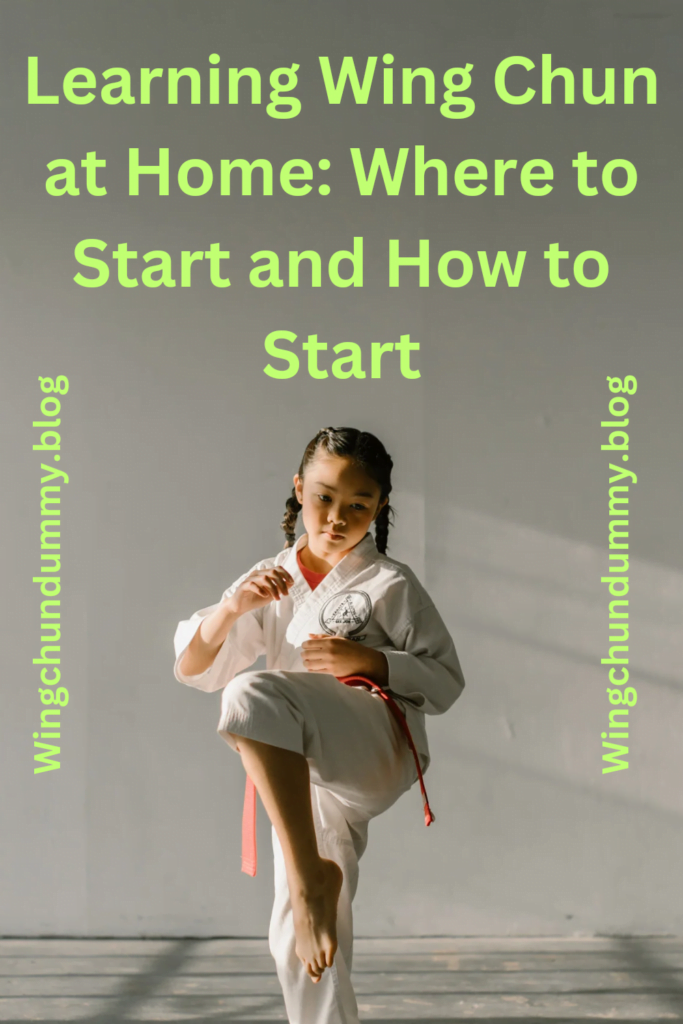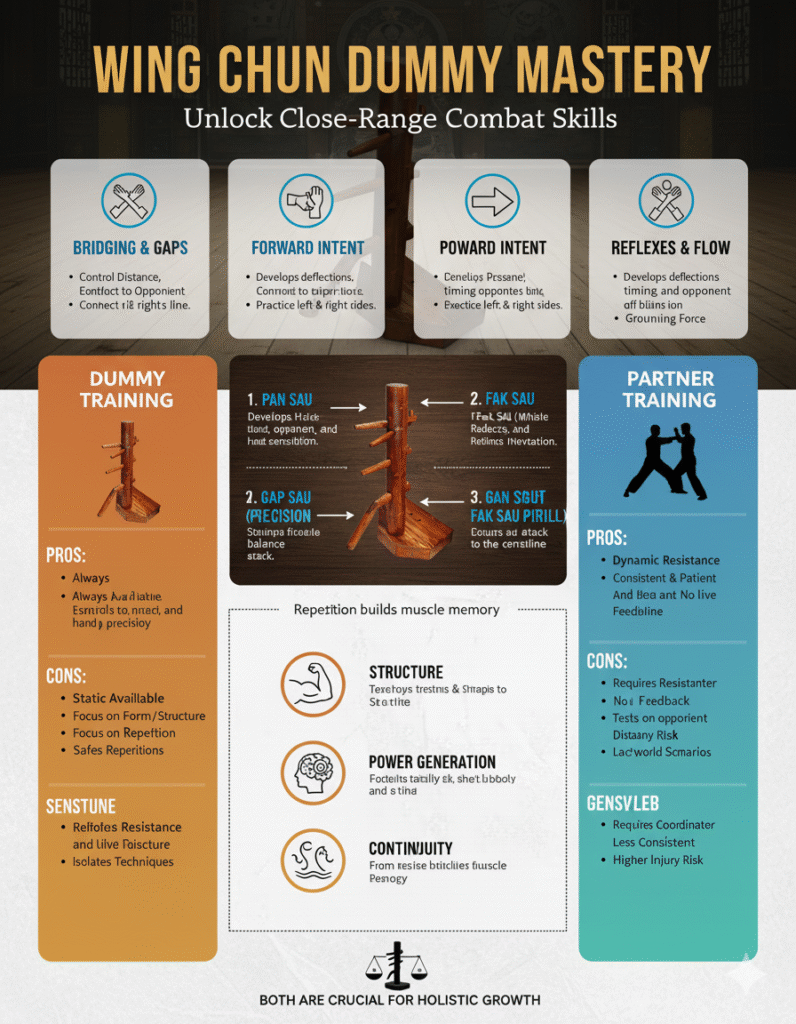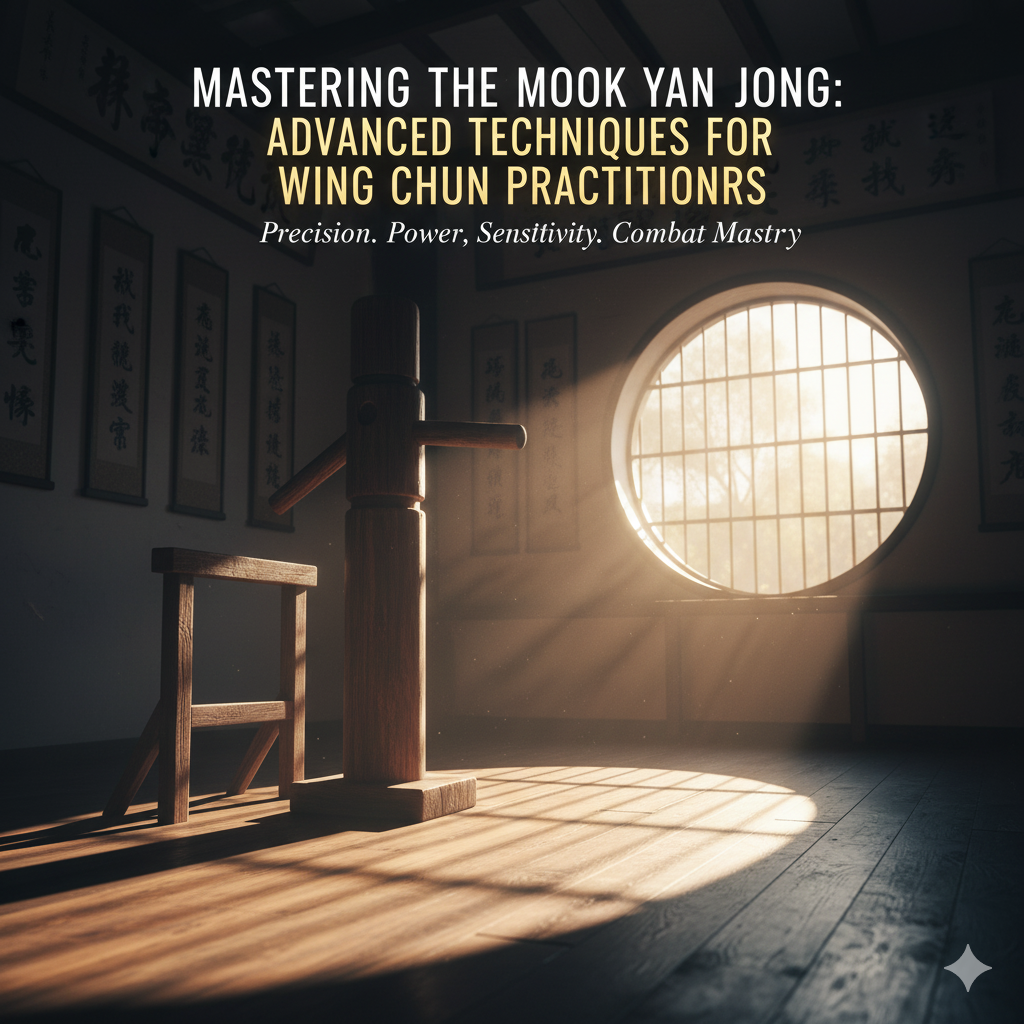Learning Wing Chun at Home
Wing Chun is a traditional Chinese martial art renowned for its practical and efficient techniques.
This distinctive self-defense system traces its origins to the Southern Shaolin Monastery in China during the Qing Dynasty, approximately 300 years ago.
It is said to have been developed by a Buddhist nun named Ng Mui, who imparted her knowledge to a young woman named Yim Wing Chun, after whom the art is named.
The core principles of Wing Chun revolve around simplicity, directness, and efficiency.
Practitioners focus on close-range combat, utilizing quick, consecutive strikes while maintaining a strong defensive posture.
The emphasis is on economy of motion, making it possible to deflect an opponent’s force while delivering powerful counterattacks.
This martial art also incorporates unique training tools such as the wooden dummy and Chi Sao (sticky hands) practice, which enhance reflexes and sensitivity.
Wing Chun gained international recognition largely due to the legendary martial artist Bruce Lee, who incorporated its techniques into his own martial art philosophy, Jeet Kune Do.
Lee’s association with Wing Chun, along with the teachings of his mentor Ip Man, propelled the art into the global spotlight.
Ip Man’s lineage has produced numerous prominent practitioners, contributing to the widespread popularity of Wing Chun.
Today, Wing Chun is practiced worldwide, attracting individuals from all walks of life.
Its appeal lies in its practicality and adaptability, making it suitable for people of varying physical abilities.
The disciplined training regimen not only enhances physical fitness but also cultivates mental focus and resilience.
As a result, Wing Chun continues to be a respected and influential martial art, offering valuable self-defense skills and personal development opportunities.
Benefits of Learning Wing Chun
Wing Chun, a traditional Chinese martial art, offers a multitude of benefits that extend beyond mere physical combat skills.
Practicing Wing Chun at home can significantly enhance your physical fitness.
The routines and drills involved are designed to improve strength, flexibility, and cardiovascular health.
Regular training helps to tone muscles and increase endurance, making it a comprehensive workout for the body.
In addition to physical benefits, Wing Chun is renowned for its effectiveness as a self-defense system.
The techniques emphasize close-range combat, quick reflexes, and efficient movements, which can be particularly useful in real-world situations.
By practicing these techniques, individuals can develop heightened awareness and improved reaction times, which are crucial for personal safety.
The mental benefits of Wing Chun are equally profound.
The practice demands a high level of focus and discipline.
Consistent training helps sharpen the mind, improve concentration, and enhance problem-solving skills.
The repetitive nature of drills and forms fosters a meditative state, which can lead to better mental clarity and reduced stress levels.
Moreover, Wing Chun encourages the development of a calm and centered mind.
The martial art teaches practitioners to remain composed under pressure and to handle conflicts with a level-headed approach.
This mental fortitude is invaluable in both personal and professional settings, promoting a balanced and resilient mindset.
Spiritually, Wing Chun connects practitioners with deeper aspects of self-awareness and inner peace.
The philosophy behind the martial art emphasizes harmony, balance, and the cultivation of inner strength.
This holistic approach to training nurtures not just the body and mind.
💖 but also the spirit, leading to a more fulfilling and enriched life.

Overall, learning Wing Chun at home can provide a comprehensive enhancement of physical fitness, self-defense skills, mental focus, and spiritual well-being.
It is a practice that offers enduring benefits, nurturing a healthier, more balanced, and resilient individual.
Setting Up Your Training Space at Home
Creating an effective training environment for learning Wing Chun at home is crucial for maximizing your practice sessions.
The first step is to designate a dedicated, clutter-free space.
This area should be large enough to allow for free movement and the execution of various techniques without any hindrances.
Ideally, the space should be free from distractions, well-ventilated, and adequately lit to enhance focus and safety.
Investing in the necessary equipment can significantly enhance your Wing Chun training at home.
One of the most fundamental pieces of equipment is the wooden dummy, or “Muk Yan Jong.” This tool is essential for practicing structure, technique, and reflexes.
Ensure the dummy is securely mounted to avoid any movement during practice, which could lead to injury.
Mats are another valuable addition to your training space.
They provide cushioning that can prevent injuries, especially when practicing footwork or falling techniques.

Choose mats that offer a balance between firmness and shock absorption to simulate real-life conditions while ensuring safety.
Mirrors can also play an essential role in your home training setup.
They allow you to observe and correct your form and posture in real-time, facilitating self-improvement.
Placing mirrors strategically around your training space can help you maintain proper alignment and technique, which are critical components in Wing Chun practice.
Safety should always be a priority. Ensure your training area is free from sharp objects, fragile items, and any other potential hazards.
Wearing appropriate training attire, such as comfortable clothing and footwear, can help prevent accidents and injuries.
Additionally, always warm up before starting your practice to prepare your muscles and joints for the physical activity ahead.
By setting up a well-organized, safe, and equipped training space, you can create an environment conducive to effective and enjoyable Wing Chun practice at home.
This preparation will not only enhance your training experience but also contribute to steady progress in your martial arts journey.
Basic Principles and Techniques
Wing Chun, a traditional Chinese martial art, is built on key principles that form the foundation of its techniques.
Understanding these fundamental concepts is crucial for anyone beginning their journey in Wing Chun.
One of the core principles is the centerline theory.
which posits that the body’s central line is the most efficient path for both attack and defense.
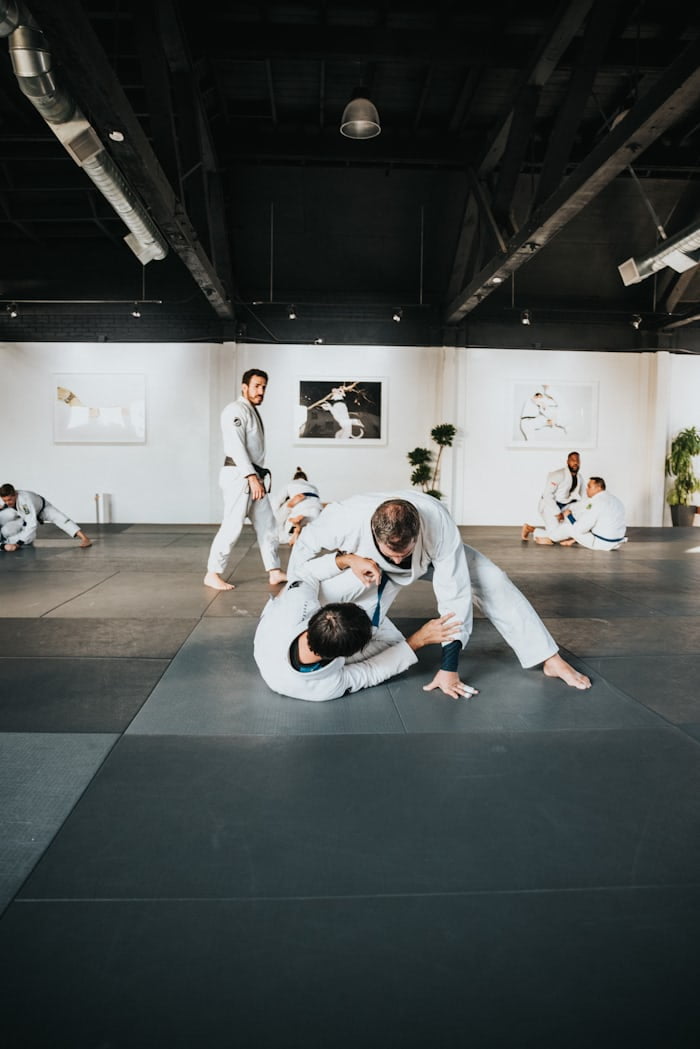
This theory emphasizes protecting your centerline while simultaneously targeting your opponent’s, making it a critical aspect to master early on.
Another essential principle is the idea of simultaneous attack and defense.
Unlike many martial arts that separate these actions, Wing Chun practitioners learn to perform both simultaneously.
This approach maximizes efficiency and minimizes response time, a vital skill in any combat situation.
Alongside this, the concept of economy of motion is deeply ingrained in Wing Chun.
The art focuses on using minimal movements and energy to achieve maximum effect, ensuring that each action is both effective and efficient.
When it comes to techniques, beginners should start with the basics.
The straight punch, known as the “chain punch,” is a simple yet powerful technique that directly aligns with the centerline theory.
Practicing this punch helps develop speed, accuracy, and power.
Equally important is the stance, commonly referred to as the “Yee Gee Kim Yeung Ma” stance.
This stance provides stability and balance, forming the foundation for all movements in Wing Chun.
Footwork is another critical aspect, as it allows practitioners to maintain balance while moving efficiently.
Basic footwork drills should be practiced regularly to build a strong foundation.
Simple blocks, such as the “Tan Sau” and “Bong Sau,” are also essential techniques that beginners must master.
These blocks are designed to deflect attacks while keeping the practitioner’s centerline protected.
Mastering these basic principles and techniques is essential before progressing to more advanced aspects of Wing Chun.
A solid understanding of the fundamentals ensures that practitioners build a strong foundation, setting them up for future success in their martial arts journey.
Learning Resources: Books, Videos, and Online Courses
Embarking on a journey to learn Wing Chun at home necessitates access to high-quality resources.
With a plethora of books, instructional videos, and online courses available, selecting the right materials can significantly enhance your learning experience.
Each type of resource offers unique benefits, catering to different learning preferences and styles.
Books: 📚
Books are invaluable for those who prefer a detailed, text-based approach to learning.
They often provide comprehensive explanations, theoretical insights, and historical context.
Notable recommendations include “Wing Chun Kung Fu: Traditional Chinese Kung Fu for Self-Defense and Health” by Ip Chun and Michael Tse, and “Wing Chun Compendium” by Wayne Belonoha.
These books not only cover fundamental techniques but also delve into the philosophical aspects of Wing Chun, making them essential reads for any serious student.
Instructional Videos: 📸
For visual learners, instructional videos offer a dynamic way to grasp the movements and techniques of Wing Chun.
Platforms like YouTube host numerous free tutorials, while paid services such as Wing Chun Online and Sifu Fernandez WingTchunDo provide high-quality, professionally produced content.
Videos allow learners to observe form, posture, and movement in real-time, making it easier to replicate and practice techniques accurately.
Online Courses:
Online courses combine the benefits of books and videos, offering structured, interactive learning experiences.
Websites like Udemy and Master Wong Academy feature courses designed by experienced instructors, providing step-by-step lessons, assignments, and feedback.
These courses often include community support, where learners can interact, ask questions, and share progress.
This interactive element can be particularly beneficial for maintaining motivation and receiving personalized guidance.
When choosing the right resources, consider your personal learning style and preferences.
Those who favor reading should start with foundational books, while visual learners might benefit more from video tutorials.
For a more integrated approach, enrolling in an online course can provide a comprehensive, guided learning path.
By leveraging a combination of these resources, you can create a well-rounded Wing Chun practice that suits your individual needs and goals.
Creating a Training Schedule
Developing a consistent training schedule is crucial when learning Wing Chun at home.
Establishing a routine not only helps in honing techniques but also ensures steady progress over time.
To begin, set realistic goals that are achievable within your current lifestyle and commitments.
For instance, if you are new to martial arts, start with shorter sessions, such as 30 minutes a day.
and gradually increase the duration and intensity as you become more comfortable.
Structure your practice sessions to balance different aspects of Wing Chun training.
A well-rounded session typically includes warm-up exercises, technique drilling, conditioning, and, if possible, sparring.
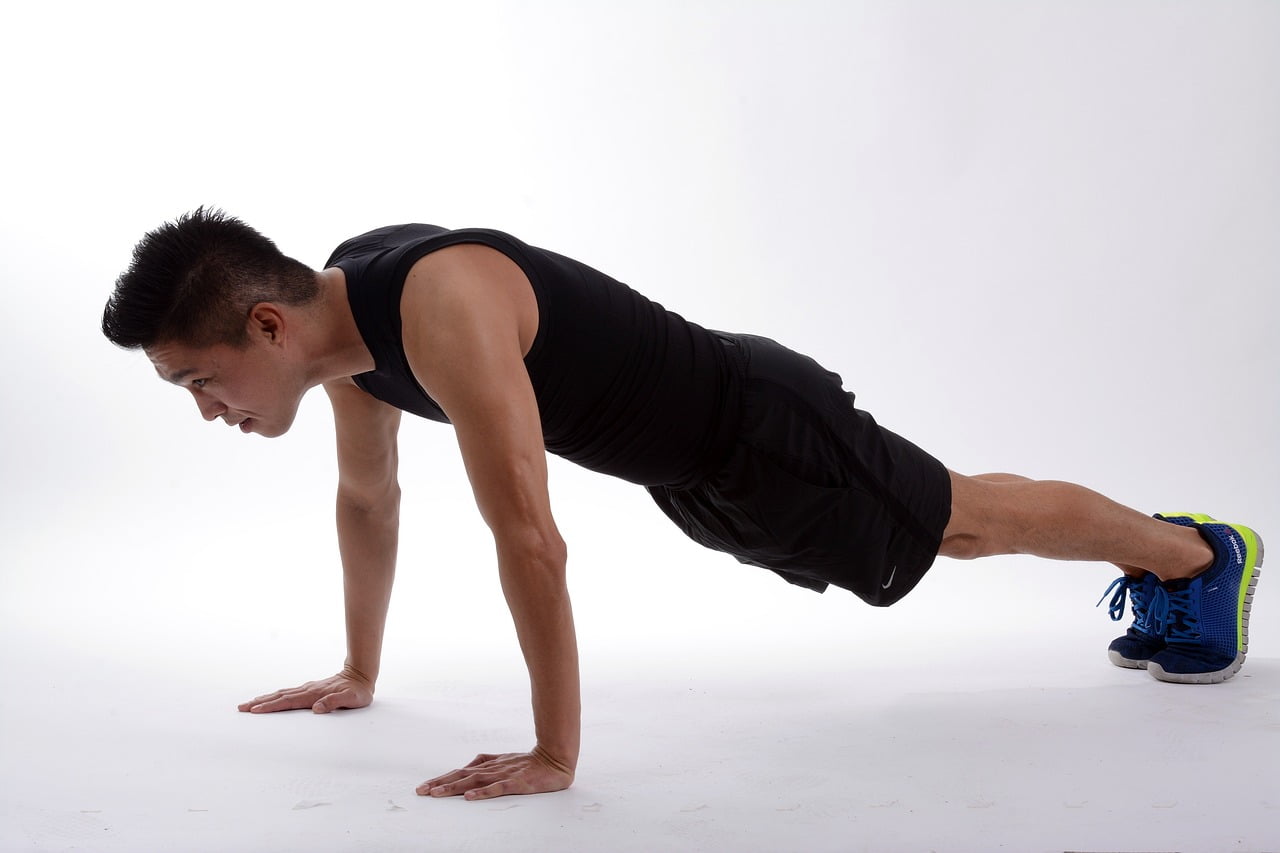
Begin with a comprehensive warm-up to prepare your body for physical activity and reduce the risk of injury.
Following the warm-up, dedicate time to practicing foundational techniques such as stances, punches, and footwork.
Repetition is key to mastering these movements, so focus on precision and form.
Conditioning is another essential element of Wing Chun training.
Incorporate strength and cardiovascular exercises to build the physical fitness necessary for martial arts.
Activities such as push-ups, squats, and jump rope can improve your overall endurance and strength, contributing to better performance in your techniques.
If you have a training partner, include sparring sessions in your schedule.
Sparring helps in applying learned techniques in a dynamic and realistic setting, enhancing your reaction time and adaptability.
For those training solo, shadow boxing and using a wooden dummy can simulate sparring scenarios effectively.
Regular practice is paramount to progress in Wing Chun.
Consistency, rather than intensity, yields the best results over time.
Track your progress by keeping a training journal, noting improvements, challenges, and areas needing more focus.
Incremental progress should be celebrated, as martial arts mastery is a long-term journey.
Joining Online Wing Chun Communities
Engaging with online Wing Chun communities can significantly enhance your learning experience, particularly when practicing at home.
By joining forums, social media groups, and virtual classes, you connect with a network of practitioners who can provide invaluable support and guidance.
These communities offer numerous benefits, including the opportunity to receive constructive feedback, maintain motivation, and learn from the experiences of others.
Feedback is crucial for any martial artist. In an online community.
you can share videos of your practice sessions and receive tips and corrections from more experienced practitioners.
This type of interactive learning can help you refine your techniques and ensure that you are progressing correctly.
Additionally, seeing others’ training routines and challenges can provide you with new insights and methods to incorporate into your practice.
Staying motivated can be challenging when training alone.
Online communities serve as a source of inspiration and encouragement.
Regularly interacting with fellow Wing Chun enthusiasts can keep you engaged and committed to your training regimen.
Celebrating small victories and sharing progress with a supportive group can make a significant difference in your journey.
Learning from others’ experiences is another substantial advantage of being part of an online Wing Chun community.
These platforms often have members who have faced similar challenges and can offer practical solutions and advice.
Whether it’s overcoming a plateau or perfecting a particular technique, the collective knowledge within these communities can be a valuable resource.

Here are some popular online Wing Chun communities and platforms to consider:
- Reddit – The Wing Chun subreddit is a vibrant community where practitioners discuss techniques, share videos, and provide support.
- Facebook Groups – There are numerous Facebook groups dedicated to Wing Chun, such as “Wing Chun Training” and “Wing Chun Discussion Group,” where members actively engage in discussions and share resources.
- Online Forums – Websites like KungFuMagazine.com host forums where Wing Chun practitioners can interact and exchange knowledge.
- YouTube Channels – Channels like “Wing Chun Online” and “Sifu Fernandez” offer instructional videos and live sessions to help you improve your skills.
- Virtual Classes – Many Wing Chun schools now offer online classes, providing structured training programs and real-time feedback from instructors.
By becoming part of these online communities, you can enrich your Wing Chun practice, gain new perspectives, and foster a sense of camaraderie with fellow martial artists.
Tracking Progress and Staying Motivated
Embarking on the journey of learning Wing Chun at home requires a structured approach to tracking progress and maintaining motivation.
One effective strategy is to keep a detailed training journal.
Documenting daily practice routines, techniques learned, and personal reflections can offer valuable insights into your development.
This journal serves as a tangible record of your commitment and growth, allowing you to review and adjust your training strategies as needed.
In addition to a training journal, recording practice sessions is highly beneficial.
Videos provide an objective perspective on your movements, enabling you to identify areas for improvement and track your progress visually over time.
Reviewing these recordings regularly can enhance self-awareness and help fine-tune your techniques.
Moreover, setting clear, achievable milestones is crucial for maintaining focus and providing a sense of direction.
These milestones could range from mastering a specific technique to completing a set number of practice hours each week.
Staying motivated is equally important in the journey of learning Wing Chun at home.
Celebrating small achievements, such as perfecting a stance or successfully executing a sequence, can boost morale and reinforce a positive mindset.
Finding a practice buddy can also significantly enhance motivation.
A partner can offer encouragement, constructive feedback, and create a sense of accountability, making the learning experience more engaging and enjoyable.
Continually challenging oneself is essential to sustain motivation and prevent stagnation.
This could involve gradually increasing the complexity of the techniques practiced.
exploring different aspects of Wing Chun.
or even participating in online communities and forums to exchange knowledge and experiences.
By setting new challenges, you keep the training dynamic and stimulating.
ensuring consistent progress and sustained interest.
Ultimately, the combination of structured progress tracking and effective motivational strategies forms the backbone of a successful home-based Wing Chun practice.
By employing these methods.
you can navigate the journey with clarity, purpose.
and enthusiasm, steadily advancing your skills and deepening your understanding of this martial art.

